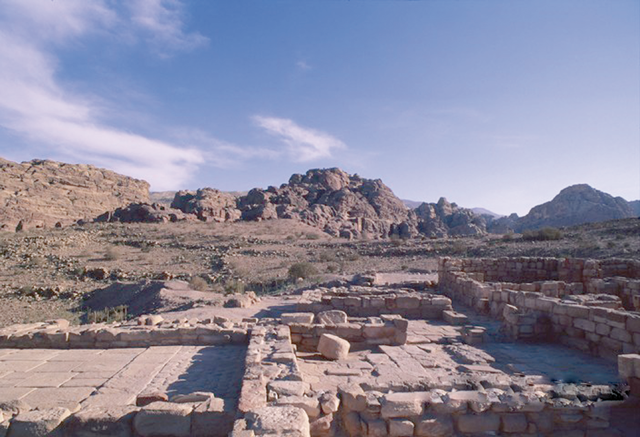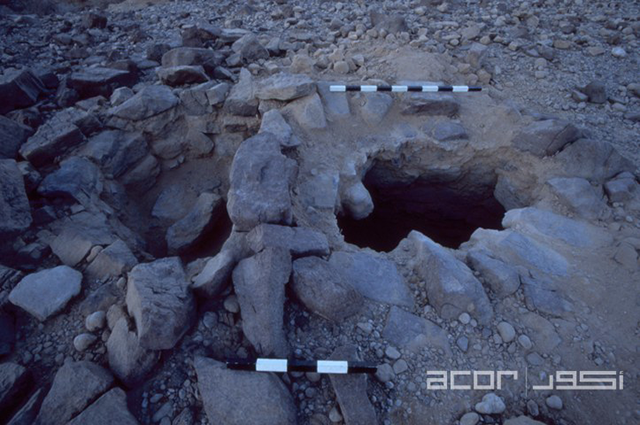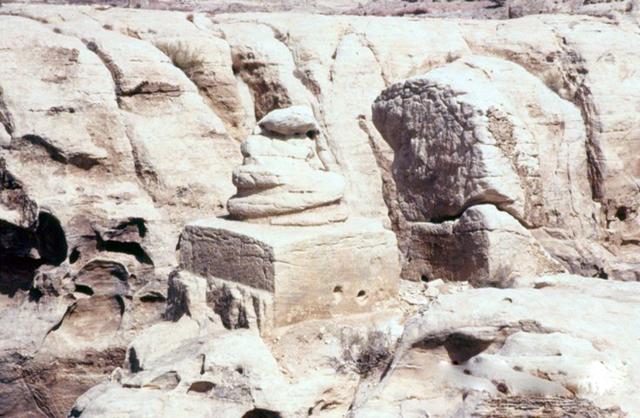You are here
Nabataean transition: From Nomadism to Sedentarism, rise of Petra as political, religious centre
By Saeb Rawashdeh - Dec 28,2023 - Last updated at Dec 28,2023

A house on ez Zantur in Petra (Photo courtesy of ACOR)
AMMAN — During Hellenistic Period [323BC-32BC] very few inscriptions referred to the Nabataean merchants in the Hellenistic world. One of such references likely dates from Miletus in Asia Minor from the middle of the 3rd century BC, while others belong to the 2nd century BC. Most of these inscriptions address the nomadic nature of the Nabataean life rather than the sedentary lifestyle.
The sedentarisation of the Nabataeans or at least of parts of the Nabataean society is understood as a longer process which started when Petra was chosen to become the seat of the tribe that is the residency of the royal family and the nobility of the tribe.
“Dealing with a tribal Arab community in a process of transition from nomadism to sedentarism, which follows traditions other than Greek poleis, this kind of sedentarisation does not mean urbanisation, but representation of the upper class,” noted Robert Wenning who also studied the Nabataean Pantheon and religious customs of ancient inhabitants of Petra.
Living in tents did not exclude luxury and a royal court was established at Petra, and became known as the capital of the Nabataeans in the Greek world, Wenning continued.
Among the earliest evidence so far no finds from the earlier Hellenistic periods are reported from Umm Al Biyara and the Nabataean name of Khirbet es-Selac remains unknown.
However, “The city of Priene in Asia Minor sent an embassy to Petra in about 129BC and Petra also seems to be mentioned in Chinese sources in 126BC,” Wenning underlined, adding that the regional and local deity Dushara became the deity of the tribe, of many tribal clans and of the Nabataean dynasty.
Whether the name Dushara is related to the mountains of Edom or describes a deity of the wilderness is debatable, Wenning said, noting that being the deity of Petra, the seat of the tribe, Dushara became the most prominent of the deities venerated by the Nabataeans.
“Petra became the political and religious centre of the Nabataeans living either at Petra or elsewhere in the Nabataean realm. Nabataean clans assembled at Petra for their festivities. The area around the centre of the city is full of such places and the clans buried their dead under the protection of Dushara in the famous rock-cut tombs at Petra,” Wenning elaborated.
The transfer of the tribal seat to Petra and the gradual emergence of the capital might be dated into approximately the second half of the 2nd century BC when there is more archaeological evidence.
That period is also associated with the emergence of the Nabataean pottery and coins that developed not much prior to 100BC. The increased quantity of pottery correlated with a growing population and social stratification.
“One should not forget that this development would be the background for the struggle between the Nabataeans and the Hasmonaeans concerning territories on the east of the Dead Sea and Jordan River. The Nabataean tribe settled at Petra sometime before 96BC when Dushara is mentioned in the oldest dated Nabataean inscription at Petra in the Bab as-Siq sanctuary,” Wenning elaborated.
The well-hewn large triclinium (a couch extending around three sides of a table used during banquits) of the Bab as-Siq sanctuary indicated that one could expect such rock-cut living-rooms, cultic cellae ( the inner area of an ancient temple), triclinia and tombs some decades before, he explained.
“The same is true for the dating of the betyls, the aniconical representations of Nabataean deities at Petra, and the earliest original Nabataean works of arts are coins and pottery. What is typical for the beginning of Nabataean art is a direct, though simplified imitation of Hellenistic prototypes,” Wenning said.
Related Articles
AMMAN — The Nabataean social structure revolved around the family, clan and tribe, and it can traced back the Nabataean nomadic past.
AMMAN — Petra’s Snake Monument in the southern part of the rose-red city offers clues to the role of serpents in Nabataeans religious practi
AMMAN — Within Nabatean polytheism, the importance of the Nabatean god Dushara increased with the political and economic development of the



















